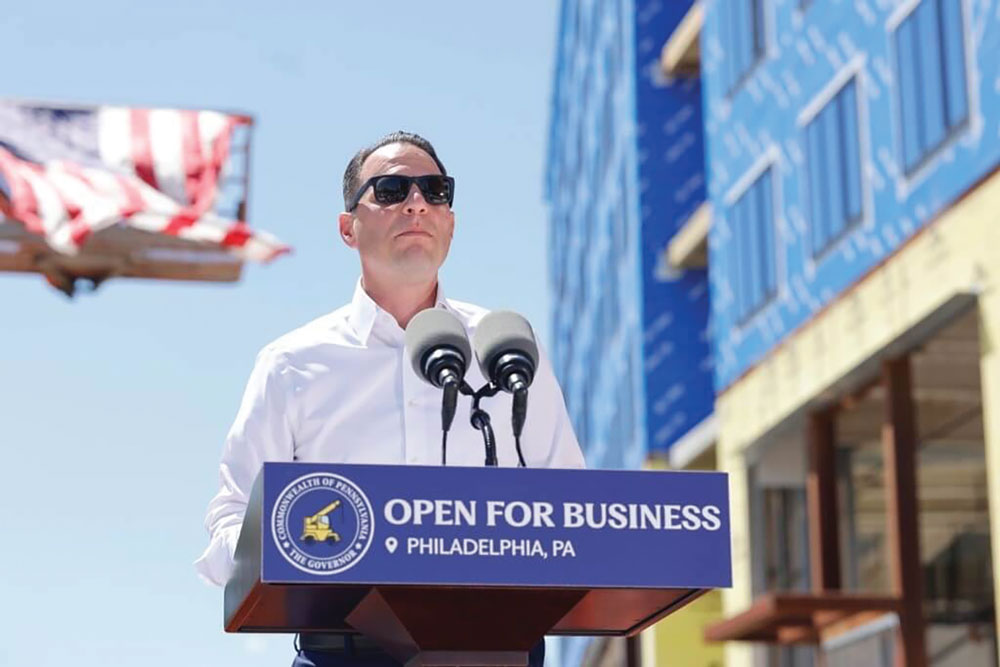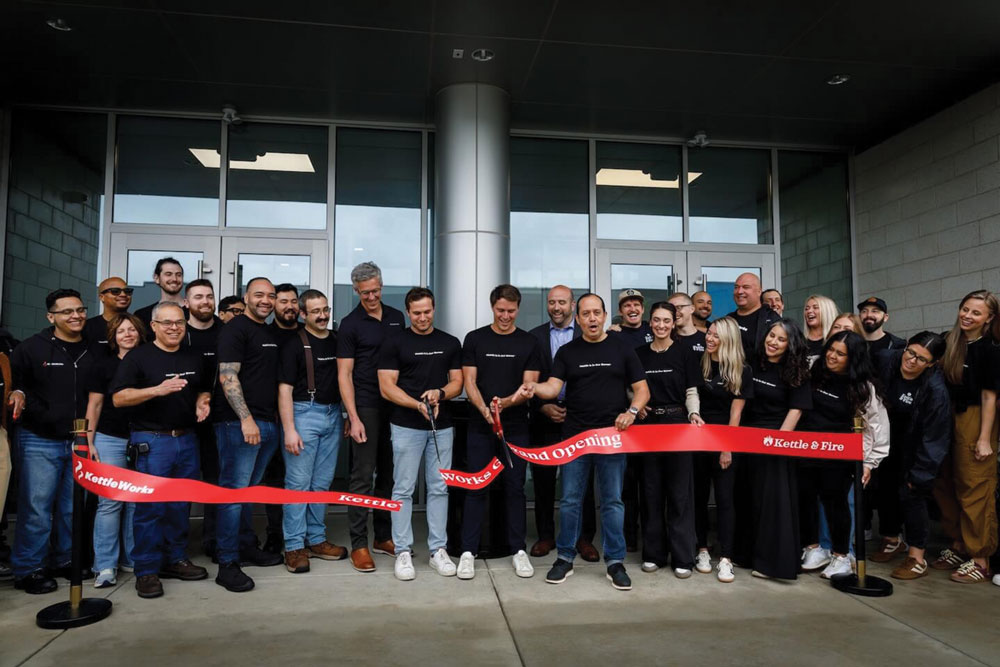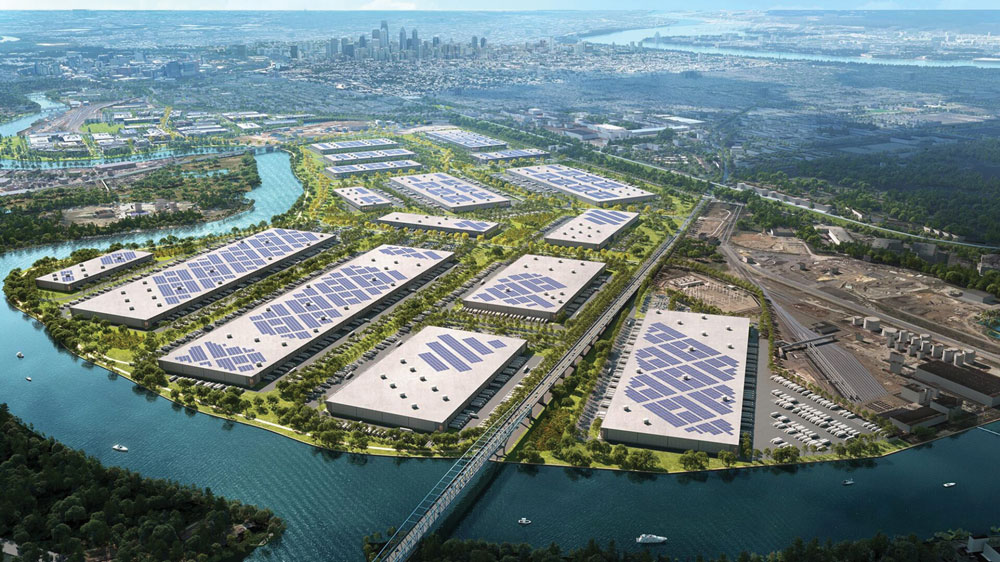If you build it, they will come. This sentiment rings true for economic developers as much as it does for farmers building fields of dreams. But what underlying factors are necessary to ensure long-term economic development success?
It’s a question leaders in Pennsylvania, spearheaded by Governor Josh Shapiro and the Pennsylvania Department of Community and Economic Development (PA DCED), have been keen to address.
An ideal position on the nation’s East Coast, renowned higher education institutions, a workforce of over 6.5 million, a diverse transportation network and the state’s favorable business climate have been key ingredients in attracting domestic and international operations. The state aims to enhance that recipe’s impact through the introduction of the Pennsylvania Strategic Investments to Enhance Sites Program (PA SITES).
In line with the Shapiro Administration’s 10-year Economic Development Strategy, shovel-ready sites and streamlined permitting processes are at the forefront of new initiatives rolling out. Outside perspectives were vital to the cultivation of PA SITES, as leadership sought out feedback from national site selectors who delivered a clear message — Pennsylvania has a lot of sites to offer, but many of these sites don’t qualify for shovel-ready status.
“Companies move fast, and they need locations where they can break ground almost immediately with little hesitation. What we were missing were large sites that were truly ready to go — with all the early leg work on infrastructure, zoning and utilities done,” says PA DCED Chief Commercial Officer Aaron Pitts. “That’s what the PA SITES program is designed to fix, closing that readiness gap so we can compete and win more big projects.”
New Beginnings
Within Governor Shapiro’s 2024-2025 bipartisan budget it was announced that $500 million had been secured for site development and $400 million toward PA SITES specifically. In May 2025, the inaugural round of recipients was unveiled, awarding over $64 million to 11 counties — Bedford, Berks, Bucks, Cumberland, Dauphin, Fayette, Franklin, Luzerne, Philadelphia, Washington and Westmoreland — out of 66 applicants.

In May 2025, Governor Josh Shapiro launched the first round of the Pennsylvania Strategic Investments to Enhance Sites program.
Photo courtesy of Pennsylvania Office of the Governor
Pitts says the first round of recipients stood out because they checked a few important boxes, including the level of support each project needed, how attractive the site would be once fully developed, local and regional support toward the project and whether it lined up with industries of focus within the state’s 10-year Economic Development Strategy.
“So, in the end,” he says, “it was about backing projects that not only had strong potential but also fit into the bigger economic picture for Pennsylvania.”
The Philadelphia Navy Yard received the round’s largest funding award at $30 million. Ensemble/Mosaic Navy Yard LLC is the joint venture behind the current 20-year Navy Yard Plan looking to drive equitable growth at what was the U.S. Navy’s very first shipyard. The new funding will go toward utility infrastructure, soil excavation, grading and stormwater management. This groundwork will aid in the introduction of six lots spanning up to 700,000 sq. ft. of advanced manufacturing and commercial space on the 109-acre site.
“This vital support from the Commonwealth builds on the Navy Yard’s existing momentum and continues to strengthen a campus already driving economic growth, attracting private investment and creating high-quality jobs,” said Ensemble Investments Managing Director Mark Seltzer. “This investment accelerates our shared vision to create pad ready sites to continue to attract top-tier businesses and position Philadelphia as a national hub for advanced industries.”
The initiative is a perfect example of a viable project checking all the boxes for the PA SITES program. For more than 25 years, efforts have been in motion to reimagine the 1,200-acre Navy Yard, which has now transformed into a mixed-use development fit for residential, industrial, retail, R&D, institutional and office activity. Over 150 companies have stationed themselves here, encompassing industries such as life sciences, defense, real estate development, technology, logistics, energy and more. At full buildout the Philadelphia Navy Yard will offer an additional 8.9 million sq. ft. of commercial and residential space.
“The new funding is a clear sign that the state sees the Navy Yard as a major economic driver for Pennsylvania — especially as a hub for life sciences and advanced manufacturing,” says Pitts. “Not only is it employing more than 15,000 people across the businesses located there, but these companies are also developing the cutting-edge technologies that are moving the country forward and cementing Pennsylvania’s place as a leader in innovation.”
Additional PA SITES recipients include Westmoreland County’s New Kensington Advanced Manufacturing Park, which gained $6.9 million for the rehabilitation of two facilities associated with the former Alcoa aluminum manufacturing site. Once complete, the project will bring up to 130,000-sq.-ft. of ready-made facility space at the 70-acre campus in the Greater Pittsburgh area.
Meanwhile, nearly 150 miles east in Cumberland County, Real Estate Collaborative Frog Switch received a combined $10.2 million construction grant and construction loan toward the redevelopment of the former Frog Switch & Manufacturing Company location. Work will include environmental assessment and remediation, building demolitions and site improvements.
“It’s turning a former refinery site into something that could change the game for how we think about urban redevelopment in Pennsylvania.”
— PA DCED Chief Commercial Officer Aaron Pitts on the 1,300-acre Bellwether District in south Philadelphia
The first round of the PA SITES program has delivered a new wave of excitement in the realm of site development, but by no means has the Commonwealth strayed from exploring an existing site’s new potential. Take redevelopment projects such as Mill 19, a once bustling location for Pittsburgh’s Jones & Laughlin Steel Company. The vacant 265,000-sq.-ft. building was stripped down to its robust steel framing and rebuilt. It is now a landing pad for advanced manufacturing, innovation, robotics and technology companies.
On a greater scale, the anticipated arrival of the 1,300-acre Bellwether District in south Philadelphia will breathe new life into the former Philadelphia Energy Solutions refinery to craft a hub for e-commerce, life sciences and logistics innovation. Sustainability is the foundation of the site’s evolution as developers decommissioned and dismantled the refinery to welcome a 700-acre Industrial Campus and a 250-acre Innovation Campus. The Industrial Campus will house 10.5 million sq. ft. of developable space when complete. In July 2025, the site will welcome its second building which brings 1 million sq. ft. of availability.
The first three buildings stationed at the Innovation Campus will head into construction this year, establishing the initial 475,000 sq. ft. of the planned 3.5-million-sq.-ft. developable space. The campus is designed to serve as a one-stop-shop for life sciences manufacturing and R&D operations, supported by the region’s industry ecosystem.
Once complete, the Bellwether District will become a generational economic engine, providing businesses tax incentives through its Keystone Opportunity Zone and its potential eligibility to become a designated Foreign Trade Zone. The project is expected to result in the creation of 19,000 direct jobs.
“It’s turning a former refinery site into something that could change the game for how we think about urban redevelopment in Pennsylvania — and will serve as a hub of long-term growth for the industrial and innovative companies that locate there,” says Pitts. “It’s bold, and we’re excited to have it here.”
The speed at which large-scale initiatives like the Bellwether District come to fruition is now supported by the new Pennsylvania Permit Fast Track Program through the state’s Office of Transformation & Opportunity. The program was designed to streamline and simplify understanding of the state’s permitting process, increase transparency across state agencies and deliver projects faster, while utilizing interagency collaboration to guide developers. The move is bolstered by a first-of-its-kind money-back guarantee system to hold state agencies accountable throughout a company’s permitting, licensing and certification process.
Building a Lasting Legacy
Advanced manufacturing is a skill Pennsylvanians have mastered. A look into fresh facility investments shows a range of life sciences, energy, transportation, electronics and food and beverage manufacturing operations set in motion.
All roads led to Central Pennsylvania for bone broth manufacturer Kettle & Fire as the company made the leap to own and operate its own manufacturing facility for the first time. The strategic decision to locate in Lancaster County began with identifying a prime greenfield site for a 167,000-sq.-ft. production plant.
“In thinking about site selection, we looked for space where we could build out the facility exactly how we envisioned,” says Kettle & Fire CEO Brian Hack. “This included ground-up design in a place that offered supply chain efficiencies, where manufacturing is thriving, and in a community that consists of a highly qualified labor pool.”


Kettle & Fire, a category leader in bone broth products, received a $4 million Pennsylvania Industrial Development Authority loan and a $40,000 WEDnetPA training grant to support its project.
Photos courtesy of Pennsylvania Office of the Governor and Kettle & Fire
As the company’s products find market favor, growth was required to meet increasing demand. Legacy food brands including Hershey’s, Utz, Snyder’s and Herr’s are just a few manufacturers that planted roots in the Commonwealth before blossoming into global brands whose homegrown operations still thrive today. Kettle & Fire aims to explore that same growth path.
“I can say that when onsite at KettleWorks — both before and since its opening — I’ve been struck by the pride and commitment demonstrated by the community,” says Hack. “We’re inspired by it and excited to be part of it. By creating jobs and investment in local operations and finding meaningful ways to give back, our goal is to grow with the community, not just in it.”
The success that food and beverage manufacturers have found in Pennsylvania translates across all target industries, resulting in $5.2 billion in private sector investment and over 9,500 new jobs alone in the past two years. This strategic growth led Amazon Web Services in June to commit $20 billion to expand Pennsylvania’s data center infrastructure to support AI and cloud computing technologies.
The lesson to be drawn from the high level of activity? Build the right business climate and the investments will come. They will most definitely come.
This Investment Profile was produced under the auspices of the Pennsylvania Department of Community and Economic Development (DCED). For more information, visit dced.pa.gov.

